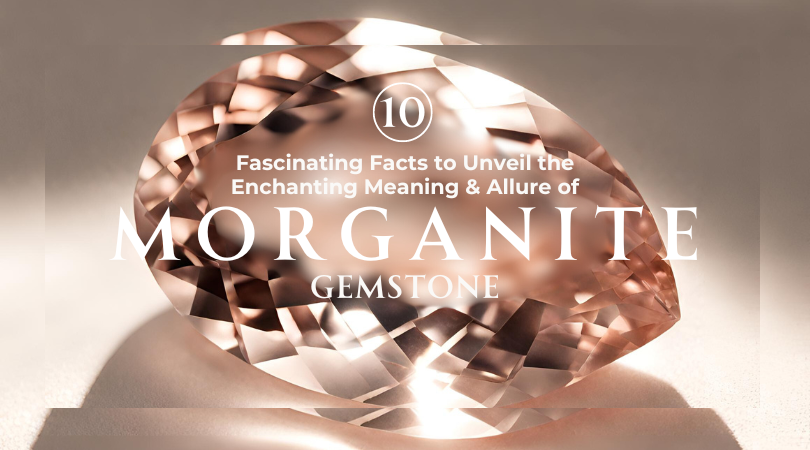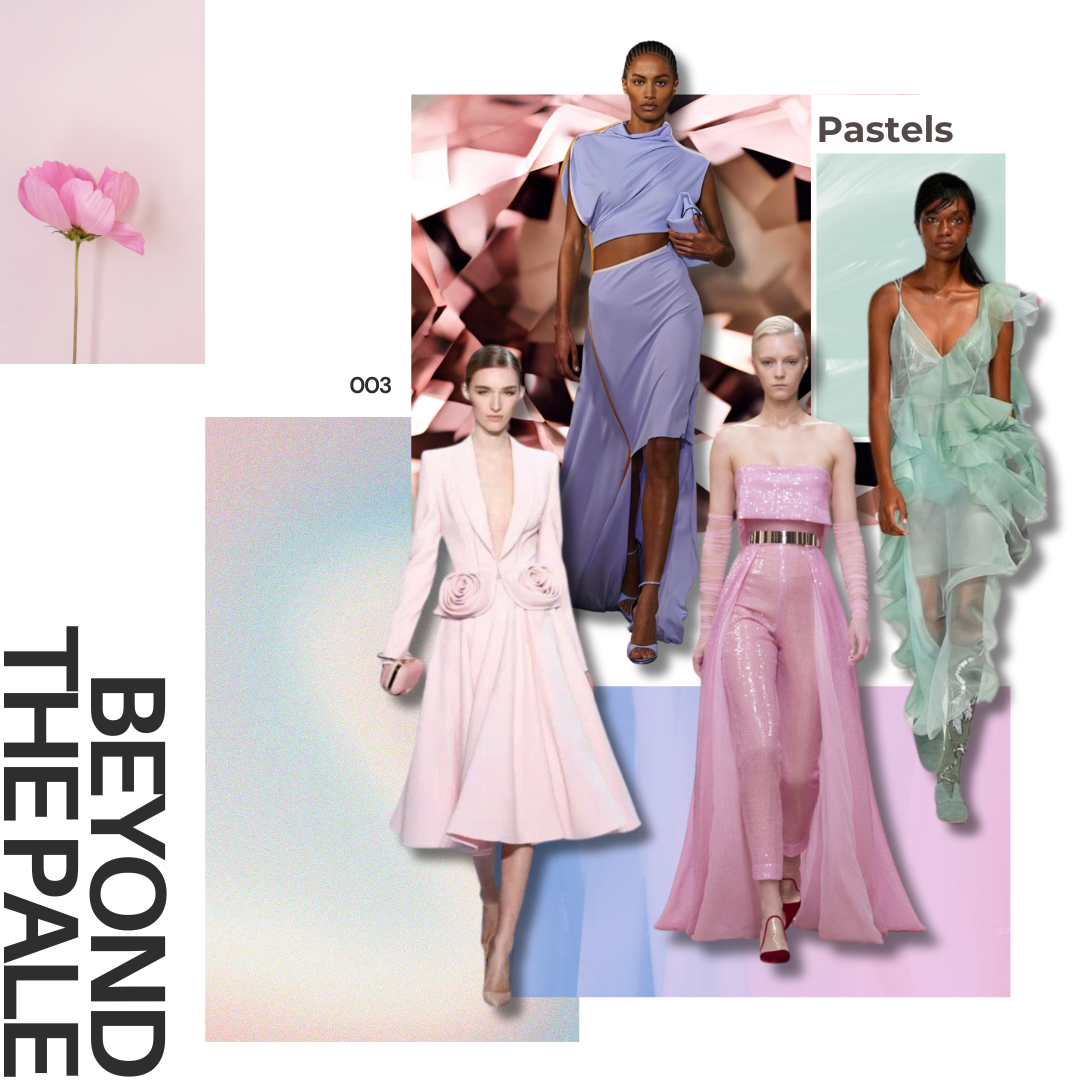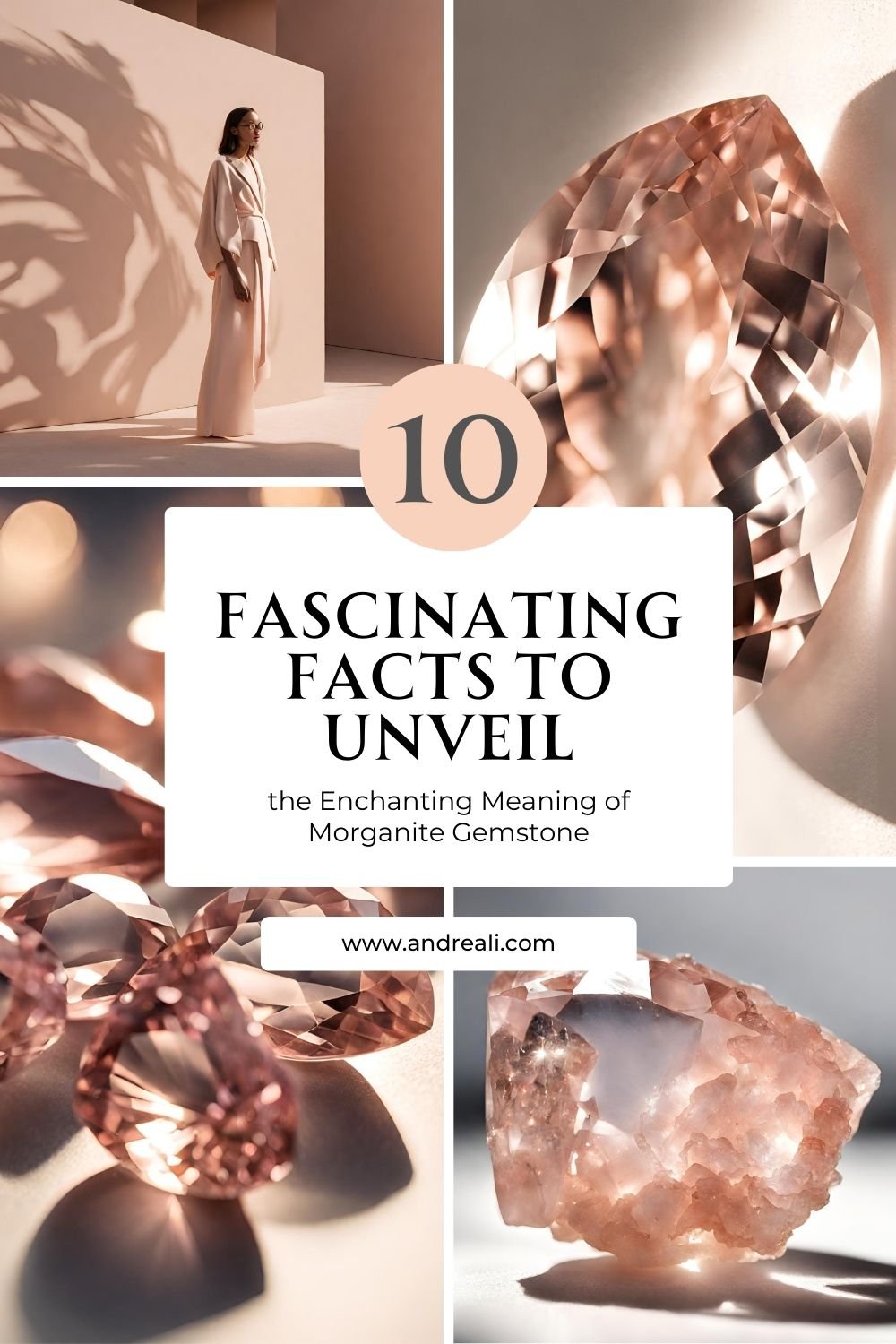Introduction to Morganite Gemstone
In the world of gemstones, saturated hues are often favored for their rich aesthetic, making them a popular choice for even the casual jewelry buyer. Since their discovery, commonly sought-after stones such as emeralds have played a prominent cultural role, adorning royal houses and starlets on the red carpet.
Yet, the accessibility of jewelry options in the current market has caused a demand for more affordable alternatives. Historically overshadowed by its beryl counterparts like emeralds, Morganite has been making waves in the world of modern jewelry design.
Known for its exquisite peach-pink hue and remarkable clarity, this gemstone this gemstone is finally getting its due in the limelight. From engagement rings to statement earrings, morganite's popularity has surged in recent years, captivating the hearts of jewelry enthusiasts and gemstone connoisseurs alike.
But beyond its undeniable aesthetic appeal lies a rich history, unique properties, and versatility that make morganite a truly fascinating gemstone to explore.
Whether you're a seasoned collector seeking to expand your knowledge or someone considering their first morganite piece, discover why this gem is a rising star in the jewelry world.
Fall in love with the delicate allure and captivating beauty of morganite as we delve deeper into how this peach-pink hue beauty has a place amongst the most discerning modern fashionistas. Become a connoisseur by the end of this post by learning more about -
The history and origins of Morganite
The characteristics and color of Morganite
Key differences between Morganite vs. Rose Quartz
Styling tips to best wear this exquisite stone
At-home care for your Morganite Jewelry
History and Origins of Morganite
Morganite, a gemstone named after the famous financier J.P. Morgan, was first discovered in California's Pala region in the early 20th century. It belongs to the beryl family and is valued for its delicate shades of pink and peach, owing to traces of manganese in its composition.
Interestingly, it only gained popularity as a gemstone after World War I when George F. Kunz, a renowned gemologist, promoted it as an alternative to traditional pink gemstones.
Despite Morganite’s more recent acclaim today, it has long held significance in cultures around the world, and is revered for its healing properties and meaning.
In ancient Egypt, morganite was believed to be a stone of divine love and was associated with the goddess Isis, representing unconditional love, compassion, and healing.
The stone's soft pink hue symbolized tenderness and affection in Chinese culture, where it represented purity and innocence.
In modern times, morganite has gained popularity as a stone that encourages loving thoughts and actions while increasing empathy towards others. Its gentle energy is said to soothe the soul and bring about feelings of joy and inner peace. In addition to its emotional healing properties, morganite is also valued for its ability to balance emotions and promote harmony in relationships. This beautiful gemstone continues to weave through different cultures, offering its unique blend of beauty and holistic benefits.
Its association with love and compassion has made it a popular choice for engagement rings and other romantic jewelry pieces. Additionally, many believe that morganite properties promote inner strength and emotional healing, making it visually stunning and spiritually meaningful for those who wear it.
Morganite Characteristics and Color Variations
While morganite is not as rare as some other gemstones, high-quality specimens with intense color and clarity are still relatively rare and can command significant prices in the market. Morganite's soft shades of pink, peach, and lavender make it a popular choice for jewelry. Despite its soft color, morganite is relatively durable, with a hardness of 7.5 to 8 on the Mohs scale, making it suitable for everyday wear.
💎 Morganite’s peachy glow is celebrated in a variety of delicate shades
How Morganite Gets Its Color
Morganite, a stunning member of the beryl family, is celebrated for its delicate shades of pink and peach. Its chemical composition includes beryllium, aluminum, silicon, and oxygen, but it's the presence of manganese that imbues morganite with its characteristic color. This unique blend of elements creates an ethereal beauty that sets morganite apart from other gemstones.
While it shares its mineralogical composition with emeralds and aquamarines, Strong color in morganite is rare, and gems usually have to be large to achieve the finest color. Finding high-quality morganite in larger sizes is much more challenging due to its scarcity in nature. As a result, untreated, deeply hued morganites are highly sought after by collectors and connoisseurs alike.
Where Is Morganite Found In the World
Morganite gemstone is primarily mined in a few locations around the world. Some of the significant contributing sources to the global supply of this beautiful pink gemstone include -
Brazil: Brazil is one of the major producers of morganite. The gemstone is mined in the states of Minas Gerais, Bahia, and Rio Grande do Norte.
Madagascar: Madagascar is known for producing high-quality morganite, particularly from the Antsirabe region.
Mozambique: Mozambique has also become a notable source of morganite in recent years, with mining activities concentrated in the Alto Ligonha District.
United States: The United States, particularly the states of California and Maine, has some deposits of morganite, although production levels are relatively lower compared to other countries.
Afghanistan: Afghanistan is another country where morganite is mined, primarily in the Nuristan Province.
Morganite vs. Rose Quartz
Morganite and rose quartz are often compared due to their similar pink hues, but they possess distinct characteristics. While both gemstones exude gentle and feminine energy, morganite is known for its soft peach-pink color, while rose quartz typically displays a more delicate pale pink shade. Interestingly, morganite's color range can also include subtle hints of orange or salmon, adding depth and complexity to the stone.
Although Morganite and rose quartz boast comparable blush hues they diverge in both appearance and properties. Here are some key factors that can help you tell them apart:
Color:
Morganite typically exhibits a range of pink to peach colors, often with a hint of orange or salmon tones.
Rose quartz is typically a pale to medium pink color, sometimes with a slightly milky or cloudy appearance.
Transparency:
Morganite tends to have better clarity. It often has fewer visible inclusions and may exhibit a more sparkling appearance.
Rose quartz can vary in transparency, but it often has a translucent to opaque quality and may contain visible inclusions or internal fractures.
Hardness:
Morganite is relatively hard, with a Mohs hardness rating of 7.5 to 8. This means it's less likely to scratch or get damaged compared to rose quartz.
Rose quartz is softer, with a Mohs hardness rating of 7, making it more prone to scratches and abrasions over time.
Price and Rarity:
Morganite is generally considered more valuable and rarer compared to rose quartz, especially high-quality specimens with intense color and clarity.
Rose quartz is more abundant and affordable, making it a popular choice for jewelry.
Luster:
Morganite often exhibits a vitreous (glassy) luster, which gives it a brilliant shine.
Rose quartz typically has a more subtle luster, often appearing slightly translucent with a soft glow.
Crystal Structure:
Both morganite and rose quartz belong to the silicate mineral family, but they have different crystal structures. Morganite is a variety of beryl, while rose quartz is a variety of quartz. This difference in crystal structure can sometimes be observed under magnification or in the way they form in nature.
By considering these factors, you can distinguish between morganite and rose quartz with confidence. Both gemstones hold a unique allure that continues to captivate jewelry enthusiasts seeking beauty with meaning.
Morganite Jewelry Inspiration: How to Style Your Gems
The delicate colors of morganite are universally flattering due to the stones’ versatile feminine palette. Easily incorporate morganite jewelry to add a subtle pop of color to your outfit, no matter the occasion.
Wear it to give you confidence in the board room to your Zoom room, add allure on date night, and out-sparkle the champagne at weekend brunch.
This stone is for you to live life in, including the big moments.
As far as big moments go, few can compete with your wedding day. Modern brides seek alternative options to ensure their big day reflects their unique personality. Many are trading in tradition with more intimate and meaningful budget-conscious celebrations.
Additionally, in today’s engagement ring market, it’s no secret that diamonds have received some bad press, causing couples to consider unconventional stones. Morganite’s exceptional clarity and soft color make it an excellent option for saying ‘I do.’
How to Wear Morganite Jewelry
When it comes to styling morganite jewelry, the key is to choose colors that complement rather than clash with its soft, warm tones. Here are some suggestions:
Neutrals: Neutral colors like white, cream, beige, or gray can provide an elegant backdrop for peach morganite jewelry, allowing the stone's delicate hue to stand out.
Pastels: Soft pastel shades such as pale pink, light lavender, baby blue, or mint green can enhance the gentle and feminine qualities of peach morganite.
Earth Tones: Earthy colors like soft browns, warm taupes, or olive greens can create a harmonious and organic look when paired with peach morganite.
Metallics: Rose gold or yellow gold jewelry complements peach morganite beautifully, enhancing its warmth and adding a touch of sophistication.
Contrasting Colors: For a more vibrant look, you can experiment with complementary colors like soft turquoise or coral, as they can create a striking contrast with peach morganite.
Remember to consider the occasion and personal style preferences when choosing the colors to wear with peach morganite jewelry. Ultimately, the goal is to create a harmonious and visually pleasing ensemble.
Care and Maintenance of Morganite Jewelry
When it comes to caring for your morganite jewelry, a few simple DIY techniques can help keep its sparkle and shine. To clean your morganite jewelry at home, mix mild dish soap with warm water and use a soft-bristled brush to scrub the gemstone gently.
Avoid using harsh chemicals or ultrasonic cleaners, as these can damage the delicate stone. After cleaning, be sure to thoroughly dry the jewelry to prevent any water spots from forming on the morganite.
Proper storage is also essential for maintaining the beauty of your morganite pieces. Keep them in a separate compartment or pouch away from other jewelry to avoid scratches and damage.
Additionally, consider storing morganite jewelry away from direct sunlight to prevent any potential fading over time. When wearing your morganite jewelry, be mindful of activities that could subject it to rough handling or impact; this will help reduce the risk of chips or scratches on the stone.
By following these simple care instructions, you can ensure that your morganite jewelry remains stunning for years to come while minimizing the need for professional maintenance or repairs.
Conclusion: Key takeaways of Morganite
Now you know the allure of Morganite lies not only in its exquisite beauty but also in its myriad of benefits. This delicate pink gemstone and its unique color and sparkle make it an ideal choice for those seeking an alternative to traditional gemstones like diamonds or sapphires.
Morganite’s neutral yet striking color has the potential to become a signature element in your personal style narrative, whether it's a casual daytime look or an evening affair. Its subtle hue complements a wide range of skin tones and outfits, making it a versatile and timeless choice.
Moreover, the healing properties associated with Morganite are said to bring feelings of joy, peace, and inner strength to the wearer, adding an emotional depth that goes beyond its aesthetic appeal.
Want to know why morganite can instantly give your look a face-lift this season, thanks to its close association with Pantone’s color of the year? Get my guide on how the season’s hottest trend is elevating the classic jewelry style of pastel jewelry.












